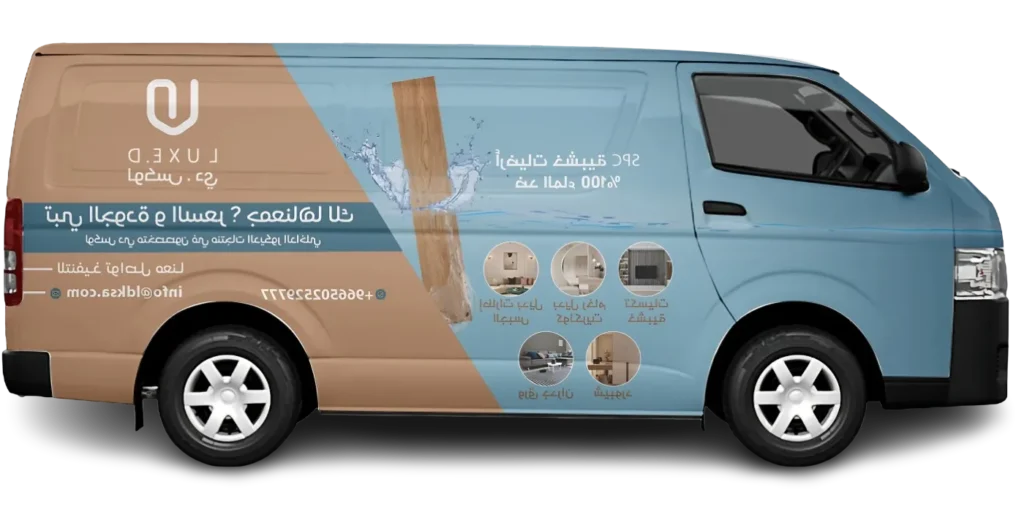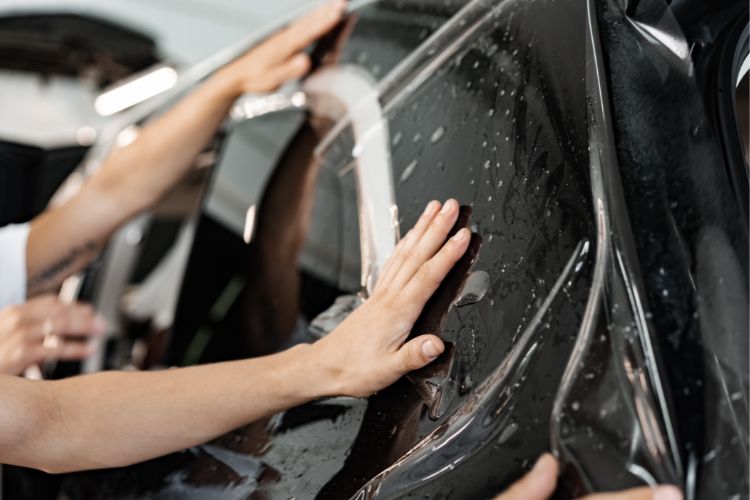Car Advertising
When considering vehicle advertising, you undoubtedly seek a visual, effective, and attention-grabbing promotional medium that lasts as long as possible. Car ads represent a modern, innovative marketing approach, enabling brands to be mobile and present in multiple locations throughout the day. However, this method faces a significant challenge: How do we ensure the ad doesn’t deteriorate over time?
This article explores key factors affecting the quality and longevity of vehicle ads, with special focus on materials used and sun exposure testing – both critical in preventing ad degradation, fading, or cracking.
The Importance of Maintaining Ad Quality
Seemingly minor details in design or installation can ultimately determine whether an ad lasts one year or two versus deteriorating within months. Primary causes of vehicle ad damage include:
- Prolonged sun exposure of adhesive materials.
- Use of materials unsuitable for outdoor environments.
- Accumulation of dust and dirt affecting appearance.
- Improper ad installation.
Thus, every step in preparing a vehicle ad – from material selection to cleaning and maintenance – requires precision.
1. Selecting the Right Material
The printing substrate is the foundation of the entire process. Inferior materials may cause peeling or fading quickly, while high-quality materials preserve color and texture for years.
Common Vehicle Ad Materials:
- Vinyl:
The most widely used material due to its flexibility and weather resistance. It can be precisely cut, offers vibrant colors, and delivers high-definition printing. - Laminated Vinyl:
Features an extra protective layer against water and UV rays. Ideal for long-term campaigns. - Cast Vinyl:
Heat-expandable for smooth application on curved surfaces. Used for full-vehicle wraps or complex, detailed designs. - Removable Films:
Designed for short-term campaigns or promotions. Can be removed without leaving residue.
Material selection should align with campaign duration, vehicle shape, and daily usage conditions.
2. Sun Exposure Testing
Sunlight is a primary factor degrading outdoor ads, especially in high-temperature regions or areas with prolonged direct sun exposure.
What is Sun Testing?
A lab test evaluating materials’ resistance to UV rays and heat. It assesses:
- Color stability over time.
- Resistance to cracking or melting.
- Material cohesion and anti-peeling properties.
Why It Matters:
Untested materials may appear flawless initially but fade and peel after months of sun exposure. Using sun-resistant, lab-certified materials is essential for campaign success.
3. High-Quality Printing
Superior materials alone are insufficient. Printing must use fade-resistant inks and high-resolution technology. UV or eco-solvent inks are preferred for outdoor durability.
Key Printing Tips:
- Calibrate design colors for outdoor lighting conditions.
- Use commercial-grade printers designed for outdoor ads.
- Avoid non-professional or home printing for vehicle ads.
4. Professional Installation
Even the best materials and printing can fail without expert installation. This process demands skill, specialized tools, and a clean environment to ensure smooth adhesion without air bubbles or wrinkles.
Critical Installation Requirements:
- Thoroughly clean the vehicle of dust and oils.
- Apply controlled heat for vinyl adhesion, especially on curves/edges.
- Avoid installation during high humidity or extreme temperatures.
Poor installation can cause peeling within weeks, wasting resources.
5. Regular Maintenance
Like any vehicle component, exterior ads require upkeep to maintain appearance.
Maintenance Guidelines:
- Hand-wash with a soft sponge and non-abrasive cleaner.
- Avoid automatic car washes with harsh brushes.
- Wipe dry immediately after washing to prevent water spots.
- Never use alcohol-based or solvent cleaners.
Consistent care extends ad life and preserves visual appeal.
6. Choosing the Right Provider
Human expertise and experience are pivotal. Partnering with a specialized vehicle ad provider prevents future issues. A reliable provider will:
- Recommend optimal materials.
- Design compelling, clear ads.
- Deliver high-quality printing.
- Ensure professional installation.
- Provide maintenance guidance.
Always request portfolio samples to verify quality.
Conclusion
A successful vehicle ad hinges not just on attractive design but on holistic quality: materials, printing, installation, and durability. For long-term investment, sun-tested, UV-resistant materials paired with professional execution are the first steps toward a campaign lasting months or years without deterioration.
Whether promoting a brand or seasonal offer, remember: Preserving ad quality enhances your public image and avoids frequent replacement costs.









